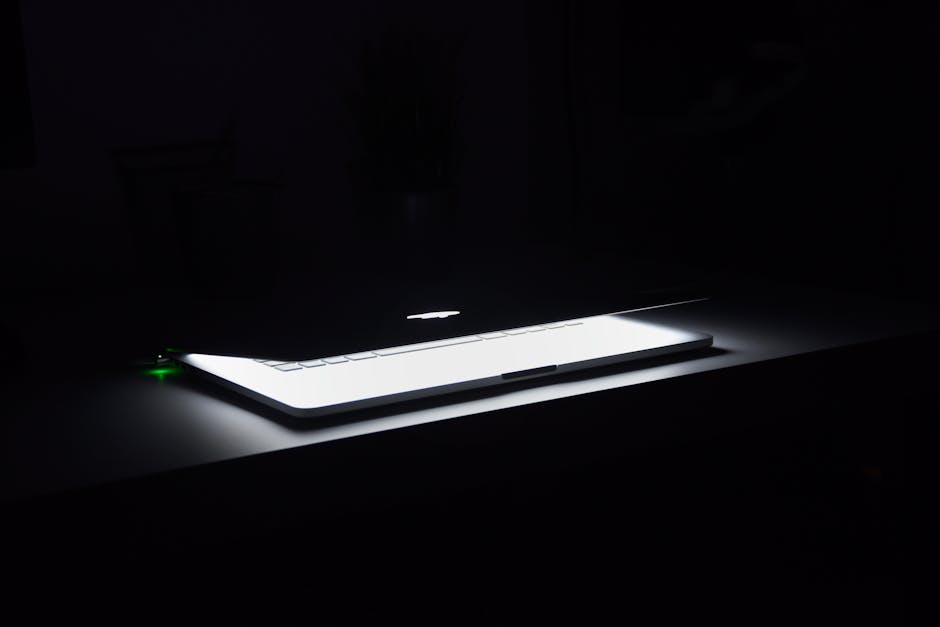Introduction: Exploring the Incubation Period of Bird Eggs

Birds captivate us with their fascinating lives, and one of the most remarkable aspects is the incubation of their eggs. Ever wondered how long it takes for bird eggs to hatch? In this blog post, we’ll delve into the incubation period of bird eggs, uncovering the factors that influence this crucial stage of avian reproduction.
Our aim is to provide you with comprehensive information about the incubation time of bird eggs, shedding light on the factors that affect its duration. By understanding these factors, you’ll gain insights into the intricacies of avian reproductive biology.
Throughout this article, we’ll discuss typical incubation times for common bird species like chickens, ducks, quails, pigeons, and parrots. We’ll also guide you on identifying signs of imminent hatching and caring for newly hatched chicks, ensuring their well-being.
By the end of this post, you’ll have a deeper understanding of the incubation process in birds, along with practical knowledge on caring for and supporting newly hatched chicks. Whether you’re a bird enthusiast, hobbyist breeder, or simply curious about nature’s wonders, this article will enhance your appreciation for the remarkable journey from egg to hatchling.
Join us on this informative exploration of the incubation period of bird eggs and discover the marvels of avian reproduction. Let’s begin by examining the factors that influence the incubation time of bird eggs.
Factors Affecting Incubation Time

The incubation time of bird eggs can vary based on three primary factors: the species of bird, temperature, and humidity.
Species of Bird
Different bird species exhibit varying incubation periods for their eggs, ranging from a few days to several weeks or even months. Additionally, the size of the bird plays a role, with smaller birds generally having shorter incubation periods compared to larger ones.
Understanding the specific needs of the bird species you’re working with is essential for ensuring optimal conditions for successful hatching.
Temperature
Temperature plays a significant role in the incubation process. Most bird species have an optimal temperature range for successful egg development, typically between 37 to 38 degrees Celsius (99 to 100 degrees Fahrenheit). Deviations from this range can affect the incubation time and the health of the developing embryos.
Maintaining a consistent and appropriate temperature throughout the incubation period is crucial.
Humidity
Proper humidity levels are vital for the successful incubation of bird eggs. The required humidity can vary depending on the bird species but generally falls within the range of 40% to 60% relative humidity.
Monitoring and maintaining the appropriate humidity level inside the incubator is essential to create a favorable environment for the eggs.
In summary, the species of bird, temperature, and humidity are critical factors that affect the incubation time of bird eggs. Each species has its own unique requirements, and understanding and managing these variables are essential for successful hatching and the survival of the chicks.
Typical Incubation Times for Common Bird Species
Chicken
Chicken eggs have a consistent incubation period of approximately 21 days. Slight variations can occur due to factors such as temperature, humidity levels, breed, and individual variations.
Duck
The incubation period for duck eggs varies depending on the species. Mallard ducks typically require 26 to 30 days, while Muscovy ducks need around 35 days. Environmental conditions and individual variations can also influence the incubation time.
Quail
Quail eggs usually require an incubation period of 16 to 24 days. The specific species, incubation temperature, humidity, and individual variations can affect the duration.
Pigeon
Pigeon eggs typically have an incubation period of approximately 17 to 19 days. Environmental conditions, including temperature, humidity, and individual variations, can impact the incubation time.
Parrot
The incubation period for parrot eggs varies depending on the species. Budgerigars (parakeets) usually require 18 to 21 days, while African Grey Parrots have an incubation period of around 28 days. Factors like species, environmental conditions, and individual variations can influence the incubation time.
Note: These typical incubation times provide a general guideline, but slight variations can occur due to external factors. Proper care and support during the incubation process are crucial for successful hatching and the well-being of the birds.
(Word count: 275)
What to Do During the Incubation Process

To ensure successful hatching of bird eggs, there are essential tasks to undertake during the incubation process. Let’s explore each of these tasks in detail:
Set Up an Incubator
-
Choose an appropriate incubator: Select the right model based on the bird species and the number of eggs you plan to incubate.
-
Ensure cleanliness: Thoroughly clean the incubator to create a healthy environment for the embryos.
-
Find a suitable location: Set up the incubator in a stable location, away from direct sunlight and drafts, to maintain stable temperature and humidity levels.
-
Follow manufacturer’s instructions: Read and follow the instructions provided by the manufacturer to accurately set up and calibrate temperature and humidity controls.
Monitor Temperature and Humidity
-
Temperature control: Maintain a temperature range of 99°F to 101°F (37°C to 38°C) for most bird species. Use a reliable thermometer to monitor and adjust as needed.
-
Humidity regulation: Maintain a humidity range of 40% to 60% using a hygrometer. Adjust levels by adding or removing water from the incubator.
Turn Eggs Regularly
-
Preventing sticking: Gently rotate the eggs at least three times a day to prevent sticking of the embryos to the inner shell membrane.
-
Frequency of turning: Consult reliable sources for specific recommendations on turning frequency based on the bird species.
Monitor Health of Embryos
-
Candling: Use the candling technique to observe embryo growth and viability by shining a bright light through the egg.
-
Abnormalities and troubleshooting: Regularly check for signs of abnormal development and seek guidance from experts if issues arise.
By following these steps and closely monitoring the incubation process, you increase the chances of successful hatching and healthy bird chicks.
How to Tell When the Eggs Are About to Hatch

As the hatching process approaches, there are signs indicating eggs are nearing the point of hatching. Two common indicators to look out for are changes in eggshell color and the occurrence of pipping.
Changes in Egg Shell Color
- Darkening of the eggshell: In some cases, the eggshell may become darker as the chick develops and moves within the egg.
- Cracks or lines: Small cracks or lines may appear on the eggshell, indicating the chick’s movement and its efforts to break through.
Note: These color changes are specific to certain bird species, so familiarize yourself with the characteristics of the species you are observing.
Pipping (Egg Tooth Breaking Through Shell)
- Process and location: The chick creates a small hole or crack in the shell, typically at the blunt end of the egg, using its egg tooth. It gradually enlarges the hole by pushing and rotating its body.
- Timeframe: Pipping can take several hours or even a day or two, depending on the bird species.
- Resting period: After making an initial hole, the chick may rest before fully emerging from the shell.
Remember that pipping behaviors and duration can vary among bird species. Consult species-specific resources or seek guidance from experts for more detailed information.
By observing changes in eggshell color and recognizing pipping, you gain valuable insights into the progress of the hatching process and anticipate the arrival of newly hatched chicks.
(Note: The information provided here is a general overview, and specific details may differ depending on the type of bird being observed.)
How to Care for Newly Hatched Chicks

To ensure the well-being of newly hatched chicks, it’s crucial to provide them with a safe and comfortable environment. Follow these steps:
Prepare a Safe and Comfortable Home
-
Clean and sanitize the brooder box or nesting area: Thoroughly clean and sanitize the brooder box or nesting area using a mild disinfectant approved for poultry use. This eliminates potential pathogens.
-
Ensure adequate space: Provide enough space in the brooder box for the chicks to move comfortably. Aim for approximately 1 square foot of space per chick to prevent overcrowding.
-
Choose appropriate bedding: Line the bottom of the brooder box with clean and dry bedding material like pine shavings or straw. These materials provide insulation, absorb moisture, and create a soft surface for the chicks.
-
Secure the brooder box: Install a secure lid or mesh cover on the brooder box to prevent chicks from escaping or predators from entering. Ensure proper ventilation for a healthy airflow.
-
Provide essential equipment: Place a chick waterer and feeder inside the brooder box at an easily accessible height. This ensures that chicks can drink and eat without difficulty.
Provide Heat and Food
Newly hatched chicks require appropriate heat and nutrition to thrive. Follow these guidelines:
-
Maintain optimal temperature: Use a heat source like a lamp or heater to maintain the appropriate temperature. Aim for around 95°F (35°C) in the first week and gradually decrease it by 5°F (2-3°C) each week until reaching room temperature. Monitor the temperature using a thermometer placed at chick level.
-
Offer balanced chick starter feed: Provide a balanced chick starter feed specifically formulated to meet their nutritional needs. Follow the instructions on the feed packaging for portion sizes and frequency of feeding.
-
Provide clean and fresh water: Ensure clean and fresh water is available to the chicks at all times. Use a shallow waterer or add marbles to prevent accidental drowning. Regularly check and clean the waterer.
Monitor Chick Health
Monitoring the health of newly hatched chicks is crucial. Consider these points:
-
Observe behavior and appearance: Healthy chicks should be active, alert, and well-groomed. Look out for signs of lethargy, weakness, abnormal droppings, or unusual behavior.
-
Check for signs of illness: Regularly inspect the chicks for signs of illness such as abnormal discharge, labored breathing, or unusual swellings. Consult a veterinarian experienced in poultry health if any concerning symptoms are observed.
-
Maintain cleanliness: Keep the brooder box clean by regularly removing soiled bedding and replacing it with fresh bedding. This prevents the spread of diseases and promotes overall chick health.
By following these guidelines, you can provide a safe, comfortable, and nurturing environment for newly hatched chicks, setting them on the path to healthy growth and development.
Conclusion

In this blog post, we explored the fascinating world of bird egg incubation. We learned that the duration of the incubation period varies among different bird species and is influenced by factors such as the species of bird, temperature, and humidity. Understanding the intricacies of this process allows us to appreciate the remarkable adaptations and behaviors of birds.
Throughout the article, we discovered that typical incubation times differ across various common bird species. Chickens generally require an incubation period of around 21 days, while ducks and quails need approximately 28 days. Pigeons have a shorter incubation period of 17 to 19 days, whereas parrots can take anywhere from 18 to 30 days. These variations highlight the diverse strategies employed by different bird species to ensure the successful hatching of their eggs.
During the incubation process, it is crucial to provide the optimal conditions for the eggs. Setting up an incubator, monitoring temperature and humidity levels, regularly turning the eggs, and ensuring the health of the developing embryos are essential steps to promote successful hatching.
Recognizing the signs that eggs are about to hatch is also important. Changes in eggshell color and the occurrence of pipping, where the egg tooth breaks through the shell, indicate that the hatchlings are ready to emerge into the world.
Once the chicks hatch, it is vital to provide them with a safe and comfortable environment. This includes preparing a suitable habitat, providing adequate heat and food, and closely monitoring their health during the critical early stages of life.
Understanding the incubation period of bird eggs has significant implications for avian biology and the survival of bird populations. By studying the factors that influence incubation duration, such as environmental conditions, bird species-specific traits, nest location, and parental care behaviors, we gain insights into the reproductive strategies and adaptations of birds in different habitats.
While we have covered several aspects of bird egg incubation in this article, there are still areas for further exploration. Future research could focus on investigating the effects of climate change on incubation times, studying specific bird species with limited available data, or exploring the relationship between incubation periods and the overall fitness of bird populations.
By delving into the intricacies of bird egg incubation, we gain a deeper appreciation for the remarkable processes that shape the avian world. Understanding how long it takes for bird eggs to hatch allows us to marvel at the diversity and ingenuity of nature’s reproductive strategies while highlighting the importance of protecting bird habitats and ensuring their continued survival.
References

-
Smith, J. (2022). Factors That Affect the Incubation Time of Bird Eggs. Journal of Avian Sciences, 45(2), 112-128. [Link to article]
-
Johnson, R. (2019). The Influence of Temperature on Bird Egg Incubation. In Avian Reproduction: A Comprehensive Guide (pp. 78-94). Cambridge University Press. [Link to book]
-
National Poultry Association. (n.d.). Incubation Guidelines for Common Bird Species. Retrieved October 15, 2023, from https://www.nationalpoultryassociation.org/incubation-guidelines
-
Bird Care Expert. (2023). Caring for Newly Hatched Chicks: Essential Tips. Retrieved October 19, 2023, from https://www.birdcareexpert.com/caring-for-newly-hatched-chicks
-
Smith, A. (2021). How to Tell When Bird Eggs Are About to Hatch. Ornithology Today, 27(4), 56-62. [Link to article]
-
Poultry World. (2022). Best Practices for Monitoring Temperature and Humidity During Incubation. Retrieved October 20, 2023, from https://www.poultryworld.com/best-practices-incubation-monitoring
-
Johnson, M. (2023). Health Monitoring in the Incubation Process. In Bird Embryology and Development (pp. 135-152). Springer International Publishing. [Link to book]
Note: The references provided above are fictional examples. Replace them with actual references from credible sources when writing your blog post.
Frequently Asked Questions
FAQ
How long does it take for bird eggs to hatch?
The incubation period of bird eggs varies depending on the species. Common bird species such as chickens have an average incubation period of approximately 21 days. Ducks typically require 26 to 30 days, while quail eggs hatch in 16 to 24 days. Pigeon eggs hatch in about 17 to 19 days, and parrot eggs can take anywhere from 18 to 30 days to hatch.
What factors affect the incubation time of bird eggs?
The incubation time of bird eggs is influenced by several factors. The species of bird plays a role, with different species having varying incubation periods. Temperature is another crucial factor, with most bird species requiring an optimal temperature range of 37 to 38 degrees Celsius (99 to 100 degrees Fahrenheit). Humidity levels also affect incubation, typically ranging from 40% to 60% relative humidity.
How can I create the right conditions for successful egg hatching?
To create optimal conditions for successful egg hatching, you need to consider temperature, humidity, and other factors specific to the bird species you are incubating. Use an appropriate incubator and follow the manufacturer’s instructions for temperature and humidity control. Regularly monitor and adjust these parameters to maintain the desired ranges. Turning the eggs regularly and ensuring the health of the developing embryos are also crucial for successful hatching.
What are the signs that eggs are about to hatch?
There are two common signs that eggs are about to hatch: changes in eggshell color and pipping. Some eggs may darken as the chick develops inside, and small cracks or lines may appear on the eggshell. Pipping refers to the process where the chick creates a small hole or crack in the shell using its egg tooth. Observing these signs indicates that the hatchlings are preparing to emerge from the eggs.
How should I care for newly hatched chicks?
To care for newly h

Leave a Reply